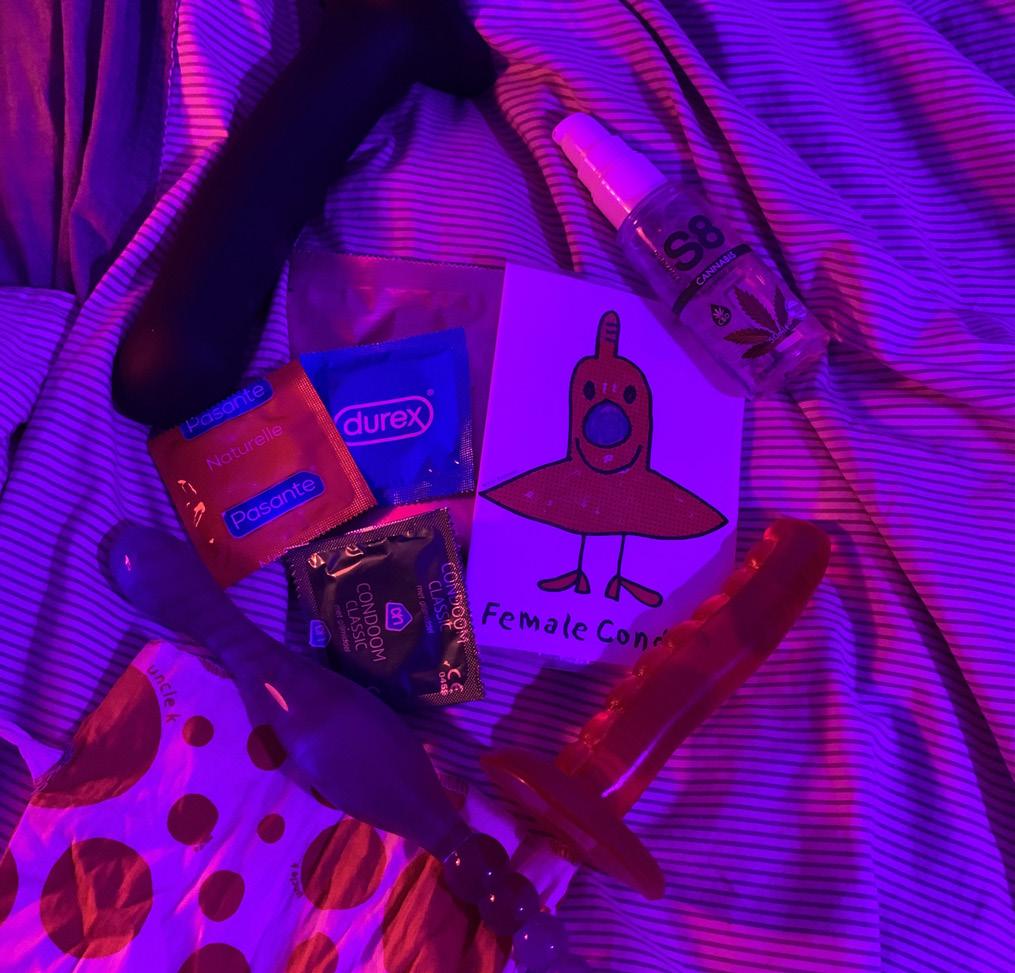
6 minute read
A Love Letter to fanfiction
Pain is Pleasure
Unpacking the stigma around kinky sex
Advertisement
From porn to TikTok trends, the media is saturated with ideas of what we should be fantasising about in the bedroom. In the midst of shirtless men wielding handcuffs, are people who equate kink with sexual abuse. To some, bondage, discipline, dominance and submission are representative of sexual liberation, but the convergence of kink with popular culture presents conflicts between individual ideas of what kinds of sexuality are appropriate, and which are not.
Text and Image Islay Kilgannon
Recently, I have been confronted with videos and posts actively condemning people who participate in BDSM, denouncing porn, popular media, and the general public for normalizing violence against women. I was surprised by the popularity of these posts, as I scrolled through hundreds of comments of praise for people deemed brave enough to speak out against ‘shameful’ sexual acts. I couldn’t help but wonder how many people actually agreed with this, as well as question my own assumptions about how young people feel towards sex; kinky sex in particular. Through an anonymous survey of

27 participants ages 19 to 29, and various conversations with friends, I sought to demystify the stylized versions of sex we are presented in porn and the media and make sense of them in relation to our experiences.
Talk dirty to me
Discussions surrounding sex always require clear communication. However, along with the public taboo on talking about sexual desires and sexual education being largely an individual responsibility, terminology often gets confused. So, I would like to clarify: kink refers to any sexual practices or desires that can be considered non-normative. While normative is a subjective term, this generally means anything that goes beyond ‘perfect couple having sweet passionate sex’, as one respondent puts it. When they think of ‘kinks’, most people think of BDSM: bondage, discipline, domination, submission, sadism, masochism. However, the broad definition shows how kink may be used as an umbrella term, as well as the exclusivity of what ‘normal’ sex is understood to be. Also important to note is that kink differs from fetish, in that a fetish involves an interest that is necessary for someone to get sexual gratification, while kinks are more fluid. The nuances of these definitions are endless, and ultimately up to the individual, but they provide the basis for communicating alternative sexual desires.

Do me right
With all this in mind, I asked whether people thought BDSM and rough sex were harmful to women or ‘antifeminist’. As the question was presented with little context, most respondents disagreed, emphasising consent and the fact that people of all genders participate in kink. However, six people did agree with the statement and five were unsure. Despite these differing opinions, 21 of the 27 responses felt that BDSM and rough sex had become more popular, or at least more visible and publicly discussed, in recent years. While kink is by no means a new concept, the rise in visibility draws attention to its impact on individual expressions of sexuality. One response noted, ‘the imagining of sex as simply the rough, impersonal, or degrading method shown in porn is a problem, especially as this is often the first experience of sex… and then becomes what many think sex is as opposed to seeing it as an exaggerated made-for-consumption product.’ With insufficient sex education and social taboos, porn and popular media are often misinterpreted models of how sex should be. Another person said the media makes them ‘feel pressured to like a specific thing or work on something that I’m not sure I would originally have liked.’ When fantasized representations are the only representations of sex, they reproduce social norms and the idea that there is a singular ‘correct’ kind of sex.

Despite the possible negative impacts of unrealistic depictions of sex, other respondents cited social media, film, and TV as playing a normalising role. Multiple people highlighted a rise in visibility of pegging on TikTok, as well as things like gender inclusive sex toys, and films like 50 Shades of Grey. On an episode of the podcast Doing It, author and ‘sexfluencer’ Shakira Scott explains that even flawed portrayals of kink, such as in 50 Shades of Grey, can bring awareness to kink and make it accessible for the general public. As one survey response stated:’Anything that encourages discussion and prevents stigma is generally good.’

(No such thing as) guilty pleasure
The persistance of implied social norms whilst discussions around sex are being confined to the private sphere creates tension when it comes to the communication and stigma around kink. Even Tinder’s community guidelines prohibit the inclusion of kinks or sexual desires in your profile, urging users to ‘keep it clean’ for ‘public consumption’. When communication is discouraged, it prevents important conversations about boundaries as well as desires from happening. In regards to communication, one response stated: ‘I feel comfortable discussing them with friends but never with a partner…some of the things I’m scared to talk about in fear of judgement.’ Another explained, despite their rather ‘basic’ fantasies: ‘I still feel uncomfortable when talking about them and often find myself cringing.’ Openness about sex may be difficult for many reasons, but survey respondents agreed that all kinds of sex and desires come with some stigma. One person expressed their thoughts on stigma stating that it is ‘sometimes for good reasons. I’m thinking about ageplay for example: not technically illegal, but definitely frowned upon, as it maybe should be. Same goes for very violent fantasies: if they’re consensual it is technically okay, but usually very telling of someone’s character.’ The conflation of sexual desires with moral character is what seems to define much of the stigma surrounding BDSM. However, our sexuality does not exist in a vacuum, and it is reasonable to question how desires that mirror violence or socially unacceptable behaviours can be enjoyed. As we try to reject stigma and embrace sexual liberty, where do we draw the line between fantasy and reality? In conversation with a friend who enjoys BDSM, they explained that their sexual desires are not reflective of how they want to be treated in real life. They may enjoy being degraded in the bedroom but, ‘it’s just power play’, and respectful communication and aftercare are still necessary to these relationships. Philosophies used by the BDSM community include RACK, Risk-Aware Consensual Kink, and SSC, Safe, Sane, Consensual. While the discomfort and social taboos surrounding are difficult to navigate, these values help guide participants and keep things safe and consensual; qualities that should define every sexual encounter.
Looking to kink and BDSM principles ultimately helps facilitate communication and define our personal boundaries. By deconstructing ideas of normal or respectable sex, there comes the understanding that sexual desire is not something to be condemned. To resist shame and stigma is to make pleasure the guiding force in our sex lives.


Where do we draw the line between fantasy and reality? Sexual desire is not something to be condemned










